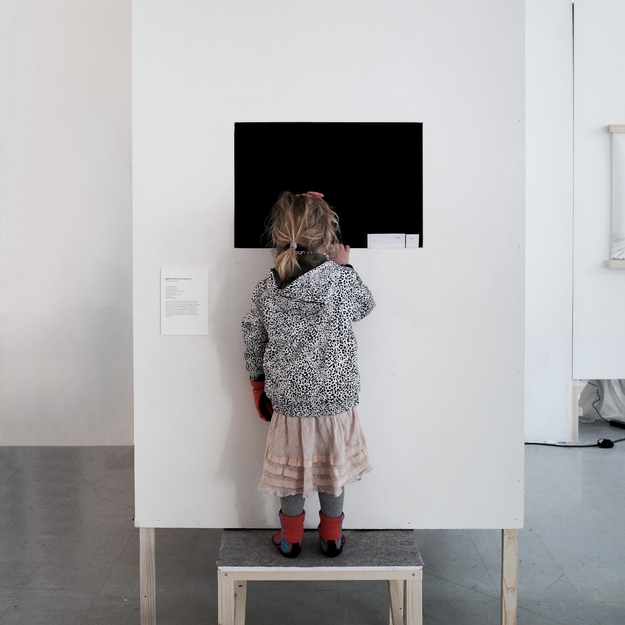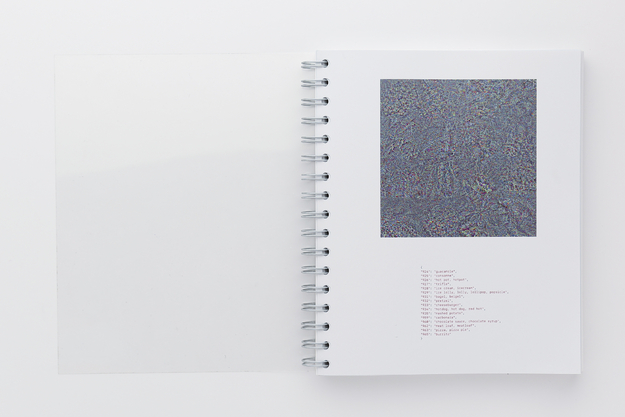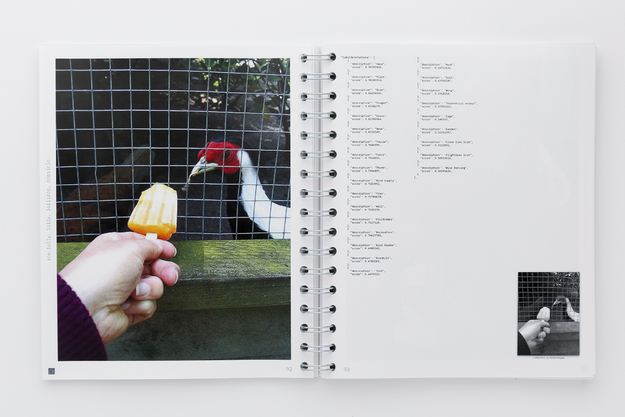Autism and making photography practice 'personal'
'At first I didn’t know how to talk about this, because I don't have any works specifically related to my autism', Nesie began. 'But then I thought about it and I realised, okay - I often got the comment that my work is not personal enough. I do try to tell some personal stories, but still the feedback from my school would be that I need to show more intimacy and vulnerability—take portraits of people.'
She continued: 'I found myself having very different ways of perceiving and understanding people, which appears to most people as being reluctant to social interaction and awkward with emotions. Then I got the definition of Autism from my psychologist.' Therefore, while Nesie's work is not personal in the sense her school expected, it is still very personal in reflecting her autism and the way she observes the world.
She explained why she chose to study photography in the first place: 'My brain really functions as image-based, so I enjoy observing the world through the visual part of it.' Before starting her photography degree, Nesie studied finance in Hong Kong. "I realised that finance is really about networking, you need to socialise. And that made me really burn out so I tried to ask myself what I enjoy most. I recognised I really like to observe things, and that’s why I want to go further in photography."
Looking via the brain, not the eye
The title of Nesie’s presentation has to do with her way of thinking about photography.
'I try to emphasise that the looking doesn't come from the eye, but from the brain', she said. 'It's more about how the brain thinks about the images that come from the world.' To illustrate this way of thinking, she showed us a collection of her instagram stories, titled (ASD).
An instagram stories collection for the specturm
In these stories we see short videos of, to name a few examples: the shadow of an airplane as it moves over rectangular fields in different shades of green, three ducks swimming in the effervescent water near a waterfall, the face-recognition feature of a phone camera picking up the plastic faces of many dolls in a toy store, a hand squeezing a tulip flower, Nesie zooming in on her phone's reflection in the eye of a rabbit.
'I don't know about you, but I could watch this stuff for hours.', Willem remarked.
'What I'm trying to explain is the way I observe the world.', Nesie continued. 'It’s the difference of making it super visual and making it - sensible in a way? A complete collapse of perception into pure sensation. That's what I feel through the things around me.'
Another focus of Nesie's work and her presentation reflecting on photography as a medium - 'how it shows people’s perceptions of the world and how the world is being communicated through the photo image'.
Night Sky, Tails, and Living Rooms
Nesie introduced two of her recent projects. First, she talked about her most recent work, titled Night Sky, Tails and Living Rooms: A project about lost homes, living in-between, and strayed hearts that can never be domesticated. 'In this project I tried to really talk about myself, my own feelings and how I navigate and negotiate my own existence living as an international student in the Netherlands for three years.', Nesie said. She did this by visiting pets belonging to people who share her experience of living abroad, and taking photos of those animals.
Image by Nesie Wang - From Nightsky, Tails, and Living Rooms (2023) Find out more here . 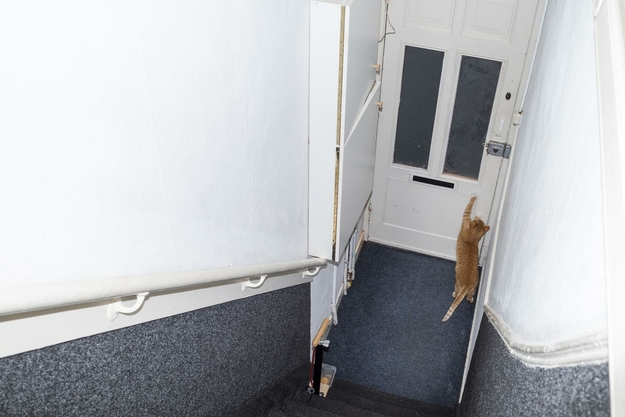
'I am far away from where I come from, but I do not close to my immediate surroundings either. There is a very existence of distance, yet the perception of distance is always relative. It can be spatial, where my body travelled around; It can also be emotional, as I feel detached and aloof'
'Instead of talking about, I don’t know, homesick stories, I wanted to talk from my own understanding, which is my feeling of living in-between. It’s not only about being homesick for my home country, but also associated with the autistic part: I feel live in-between all the time, I am different and not understandable by most of the people around.', Nesie continued. 'And actually I want to express my feelings with an accepting attitude. I accept it, I live as it, and I feel okay.'
Image by Nesie Wang - from Nightsky, Tails, and Living Rooms (2023) Find out more here . 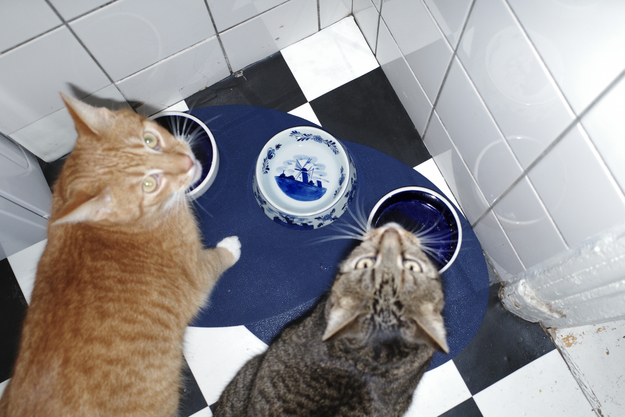
While she received positive feedback for this work, most people seemed to only pick up on the homesickness aspect of it. 'What I really wanted to express is that I live this way and I accept it, but still people don’t really get it.'
'These images are my symptoms. They are whispering to my solitude, whirling in between alienation and normality—the displaced, ambiguous, and restrained. And I share them with every strayed heart.'
Image by Nesie Wang - From Nightsky, Tails, and Living Rooms (2023) Find out more here . 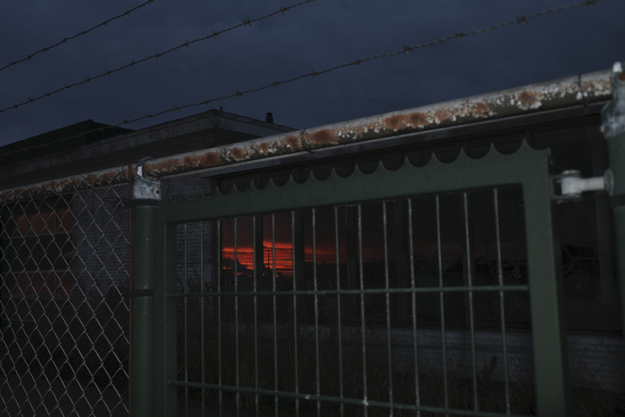
Nesie presented this work in the Hague in form of an installation consisting of a large cardboard box which visitors could peak inside through a small window. 'Inside you can see a small string projected by a Kodak Carousel.', she explained. 'So it was a kind of nostalgic way of showing the work. I chose to do this this because I really like the physical intervals created by the carousel and the sound it makes. Also the space is confined, so you have to really focus on this thing, there's a show in front of you that you can’t escape. Meanwhile you’ve got the feeling that you’re peaking through something, you’re peaking inside of me, something like that.'
Deep Appetite
Next, Nesie introduced us to another one of her projects, titled Deep Appetite, in which she reflected on the intersections between human and machine vision. 'I made this two years ago, right before AI image generators went viral, so it’s interesting for me to look back at it now.', she said.
'It started with my fascination with AI and machine learning', she explained, 'but in the end it turned out as a joke on modern knowledge supremacy and its arrogance in categorising and systematising the world.' Nesie investigated a dataset of 1.4 million images which scientists collected to train the image interpretation AI models. Image scraped from the internet are labeled and fed to the machine learning algorithm to learn about how the object connected to the label looks like; For example, they would give an image of a cup a label "cup", in order to train it to recognise cups.
For her project, Nesie chose to look at sixteen sub-categories of food in the dataset - 'with my human eyes, to select the images I found 'mis-contextualized' to train the machine with'. As it turned out, many of the training images are by no means clear in their depiction of the category they are supposed to represent. For example, an image labeled 'cup' could contain a table full of plates and various dishes, including but not centering a cup.
Reflecting on photography as a medium
Nesie explained that this project was also a personal reflection on the photography medium. 'Why do we take so many images?', she asked - 'Why are there so many images around the world, and why as a photographer do I need to produce more?'
In her studies she learned a lot about the importance of contextualising the image and reflecting on what it represents. All of this made her arrive at the ways and places that knowledge is stored - libraries, catalogues, memory disks, the totality of knowledge.
AI and images
With these reflection in mind, Nesie came across the article How convolutional neural networks see the world on the Keras blog. 'It explained how we usually input the images and then tell the AI to output a text, an explanation of the content of the image. But in this article the scientist doing the opposite, asking the machine to generate an image according to the label.', Nesie explained. The results are unintelligible to the human eye - asked to generate an image of a magpie, the AI produced a square of purple interspersed with accents of rainbow colours.
This output is based on the algorithm processing many images of magpies and memorising the edges and outlines of each one. 'For me it's really interesting', Nesie continued - 'We try so hard to teach them to see like us but actually they don’t see things like humans do.'
This ties back to the idea of looking via the brain and not the eye. Looking via our human eyes, we would never identify this image as a magpie. However, the machine created by humans, to mimic the functions of the human brain, presents this output. 'Maybe the 'brain' actually understands the world like this, and looks at the world through these patterns.', Nesie speculated.
Food categories have cultural implications
'I specifically decided to choose food dishes as categories because food dishes also contain cultural implications. Food dish classes say more than just the object facts, they were labelled by scientists who are influenced by their own cultural biases.'
She showed an example: 'If you see at the top left side it says trifle, and there are 1150 images of trifles. I went through these and selected images like this one - it’s not really a trifle, what is this?'
n07613480_18869.jpg with label 'Trifle' - source: ImageNet-1k Database.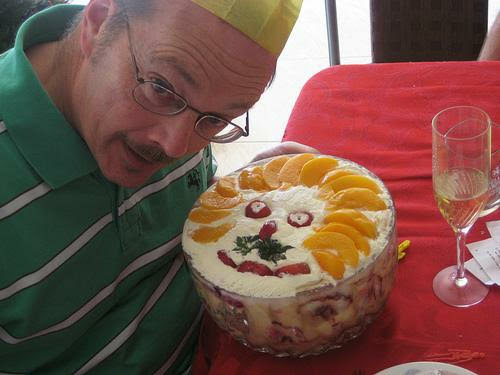
'But still they use this image to tell the machine what a trifle is, that's interesting.', Nesie said. She chose 110 of these absurd images to be the focus of her book. 'I tried to make the book design very clean and serious, like a catalogue or a thesis.', she explained.
'Are scientists trying to fool the machine with these interpretations that go beyond the machine’s intelligence? Or are they actually training machines to become smarter by adding humour and absurdity?'
'On the left part are the images, scraped from Facebook or somewhere similar, always in low resolution. On the right side there’s the output from the machine, I just directly copied the whole thing - also together with the font, a monospaced font, trying to show that we tried to make the machine non-characteristic but in a way it becomes characteristic anyway.'
Ending comments and reflections
To round off her presentation, Nesie shared some final comments and reflections.
'I photograph because I see images as a way to articulate my mind, because usually I find it very difficult to communicate or to speak things out.'
She continued: 'But I also recognise the limitations of photography: I thought I could use it to express myself but I realised photographs cannot become us, they cannot explain everything.'
Nesie also pointed out that photographs have the power to represent and speak for people, but relying too much on visuals can be limiting, especially since the internet and social media provide a constant flow of images which people interact with with very limited attention spans.
'Images improve communication efficiency, but they also make us think less. And in my mind that's very bad, because we also need to try and understand things and be more critical.', Nesie summarised, and concluded: 'I now understand how all this connects to my practice, how I can explain my choice to do photography: photography is a way of communication but it is also an action, the process of taking photos is very important to reflect my mind. The process is more important than the output as a visual thing, an image.'
Doubts about photography
'When we first met you mentioned that you’re not sure whether you want to be a photographer.', Willem remembered.
Nesie explained these doubts and why she wanted to take a break from her studies: 'As an educational system, my school has certain expectations to shape students. For example when I did a project about a community (see Shalomkerk below), their feedback constantly asked me to get closer, to take portraits, include more faces - that's what they want, and I feel ridiculous in a way because for me that's not the real way of telling a story.'
'Did you ask why they want these things from you?', roundtable guest Gerard van Wolferen wanted to know.
'It's because when I tell the story in my own way, it's hard for others to understand.', Nesie said. 'When you see someone's face, that's immediately understandable. But for me that's just one representation of someone.'
Another artist wondered whether the difficulty people seem to have in understanding Nesie’s work could stem from the complexity of her process. Nesie agreed: 'Yeah, that’s also a point. Because I think nowadays nobody is really willing to spend time to understand an image - images become cheaper and cheaper, lighter and lighter. So that’s what us photography students doing now: you need to have a concept, a research process, and people also need to know about you—identity, positioning etc. When telling someone about your work, it's not just about the work, they also want to know more about yourself as the maker. In a way, artists sell their own work by selling themselves.'
Word and image
Annelies pointed out how the images and texts in Nesie's work complement each other. 'When I see your pictures, I get the feeling that it's more poems, more sentences in a sequence.', she said. 'The photographs for me are also like sentences, I don’t know exactly what you want to say with them but I can feel it. And with the text next to them you give a hint to the poetry of the image.'
Nesie revealed that she only added the texts after realising that people struggled to interpret the images on their own. 'I think the combination is what makes it strong', Annelies assured her.
Reflecting on autism in the photography practice
'When did this concept of autism enter your work?', Gerard asked.
Nesie explained that she first started consciously reflecting on the influence of autism on her work after Deep Appetite and before Nightsky, Tails, and Living rooms, during her work on another project titled Shalomkerk.
This project was situated at a Protestant church in The Hague Southwest. Nesie visited the church, which is frequented not only by Christians but people from different religions such as Muslim and Hindi people, as part of a course on ethnographic architecture offered by TU Delft. Fascinated by the place, she decided to stay with the community for a while and work with them for her project.
Image by Nesie Wang - from Shalomkerk (2022) Participants gardening at the backyard of the church.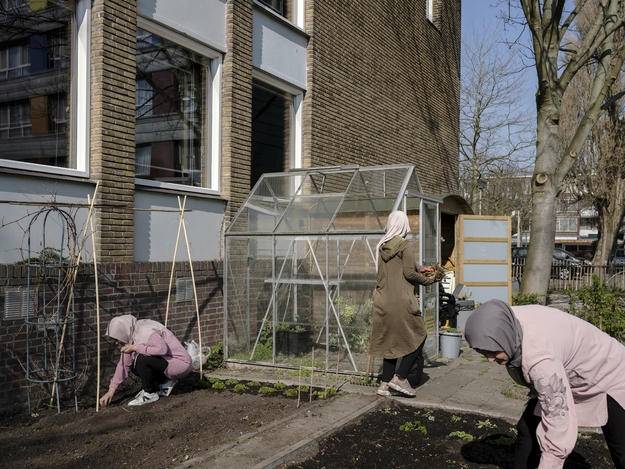
'Through that I understood that the way I approach others, a group of people, is so different', Nesie reflected. 'Maybe it’s because of my autism, but I don’t like to go straight into someone’s life and ask for their private life stories. For me it's more about staying together with them long enough until they don't feel self-conscious with the presence of my camera. In a way, I wanted to be invisible.'
This is reflected in her photographs, where she doesn't focus on individual people, but instead shows the spaces they use together and the practices they share as a community.
Image by Nesie Wang - from Shalomkerk (2022) The church office. 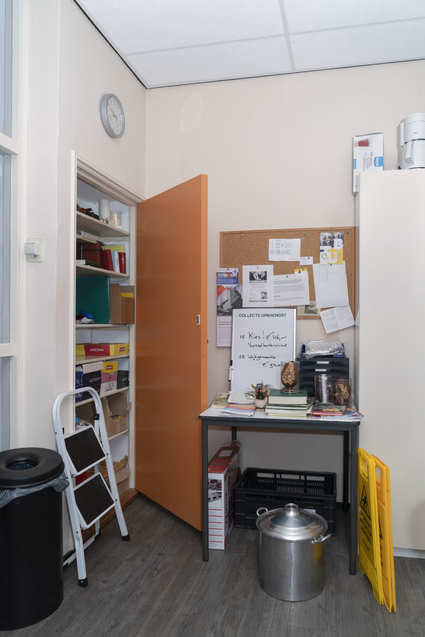
'But then the feedback from my school was that it’s not close enough, the story is not clearly being told.', Nesie told us.
'The best pictures for me are the ones without people. They tell the story.', Annelies said. Willem agreed: 'Yes, they are the most personal.'
'It’s kind of as if you’re there, sitting there by yourself and reflecting on what’s happening.', Victor added. 'I think the way you are showing things actually captures more of the energy and atmosphere that hangs in this sort of space.'
The photographer's positioning in theory and practice
Nesie reflected on the role of her own positioning as a photographer. 'For me it’s also this personal struggle because I’m not related in any way. I’m not Dutch, not European, not sharing similar backgrounds with anyone in the community, and I have to admit that by approaching the group via institutions, I am privileged. Meanwhile, the camera also has an intrusive power to portray and represent. So it’s a struggle to position myself in this project, since I refuse to have a distant and down-looking perspective and sell an eye-catching or empathetic story that aligns to the western gaze.
...However, the solution would never be become part of them so this becomes our story. This is a narcissistic circumvention to the complex relationship between the maker and their subjects in photography. For me, the story belongs to Shalomkerk, and I am an outsider narrator. Although I do obtained personal friendships with many people I met there, I would not put my friendship with them as part of storytelling for this project. I want to keep these friendships away from being distorted by the greedy intention of making stories.'
Victor shared from experience with working in a similar community that while reflections on power imbalances and positioning are important, it’s more important to be open and interested in the people you interact with in the moment and build a relationship with them in that way.
Drawing connections
Finally, another artist pointed out that Nesie's work shares some of the characteristics that can be found in other work presented at A/artist roundtables: delving deep into research and cataloguing with Deep Appetite, and having to sort through a lot of output and findings - 'And then when you present it, it takes a lot of words to explain the process you’ve been through, and findings lead to other points of interest, and people might not have the attention span to follow it.'
Other similarities include the interplay of words an images, as well as a talent for capturing the absurd in the everyday.
To discover more of Nesie's work, visit nesiewang.com.
